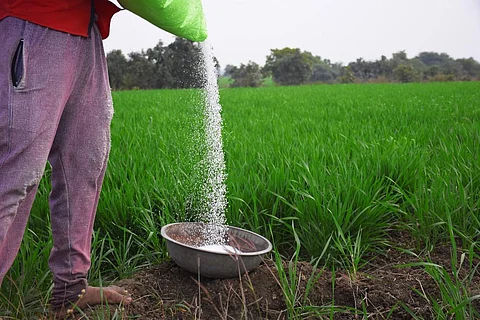

Nano liquid urea’s commercial production may have received the nod too soon. The special fertiliser was touted as a better substitute for traditional granular one, however, farmers report no increase in production and higher input costs on using it.
The Indian Council of Agricultural Research (ICAR) must have the trial data for at least three seasons for a crop to approve any new fertiliser. Commercial production of nano liquid urea received the nod in August 2021.
Publicly available information for nano urea trials showed 13 crops were tested at 43 locations (on station) and 94 crops were tested in the fields in 21 states for four seasons.
However, the research data for three seasons is unavailable for any crop. Indian Farmers and Fertiliser Cooperative (IFFCO), which produced the fertiliser, has data for just two seasons for a single crop till now, according to the information given to Down to Earth.
According to the information given to Down to Earth through IFFCO, they have only two seasons of data for a single crop till now.
The introduction of nano liquid urea was a welcome step as a new technology, said N Raghuram from Guru Gobind Singh Indraprastha University, Delhi. However, he added that there should have been crop trial data for three years or six seasons at least before the permission for commercial production was given.
Raghuram is the head of the Centre for Sustainable Nitrogen and Nutrient Management.
“Data for trials of nano liquid urea was available for very few crops when the central government approved its use in 2021. The government didn’t even have the data for three seasons. The consequences and results of the fertiliser can’t be predicted,” he said.
A bottle of 500 millilitre nano liquid urea might be equivalent to 45 kilogrammes of conventional granular urea, he said.
“Even if crop yield does not increase with nano urea, it should not decrease at least. It should not have any bad effect on valuable insects, the environment, biosecurity and humans,” Raghuram said.
The scientist gave the example of genetically modified crops that go through the lab first and then are taken for field trials. The Genetic Engineering Appraisal Committee, India’s apex regulator for transgenic products, tests it. The crop then must pass point-wise lab results, he said.
However, these lab test details are not available for nano liquid urea.
On the other hand, a report by Parliamentary Standing Committee on Chemicals and Fertilisers in March 2023 said the fertiliser has gone through biosafety and toxicity tests based on guidelines of the Department of Biotechnology.
Intergovernmental forum Organization for Economic Cooperation and Development prepared these guidelines, which are applicable globally.
Nano urea is completely safe for humans, animals and birds and rhizosphere organisms and the environment, the Parliamentary panel report said.
There are three phases in any critical trial and a product can not be considered better if it doesn’t pass phase three, Raghuram said. If there was no immediate crisis, nano liquid urea should have been brought to the farmers after completing the trial.
The raw materials used for producing the liquid fertiliser are also in question, as the information is not publicly available.
This report is part of a series on nano urea.